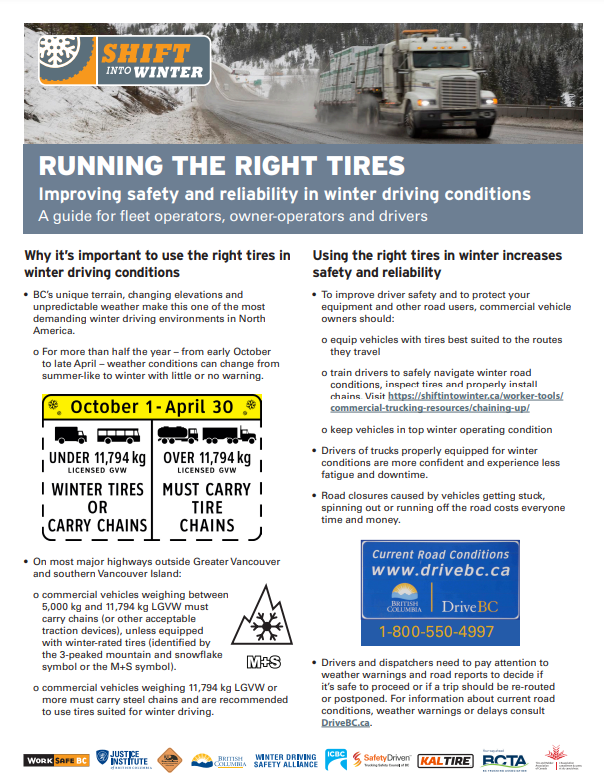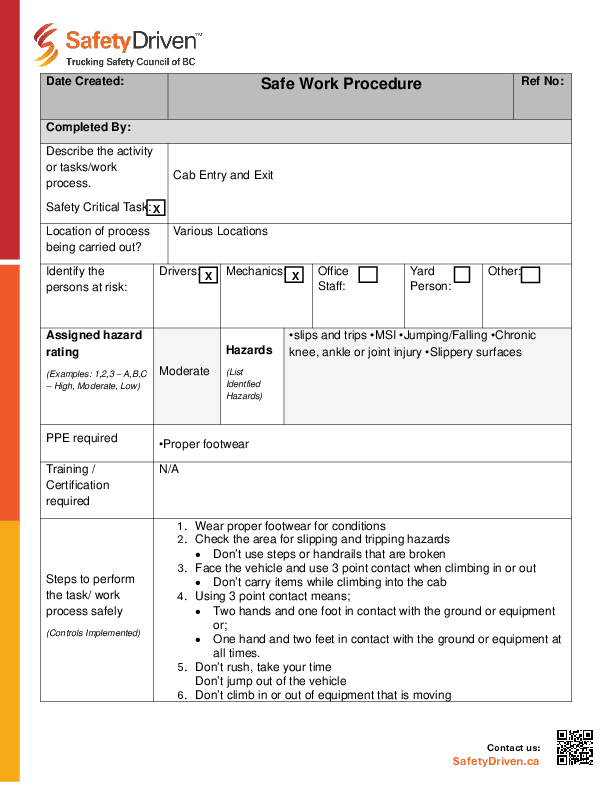
It’s coming! Winter! Is your truck ready? More importantly, are YOU ready?
Winter will soon be here — the time of year when drivers need to be especially alert.
Depending on where the roads take you, you may encounter winter road conditions earlier in some areas. As a professional driver, you know all about ensuring your vehicle is mechanically and physically prepared to handle multiple road conditions — dry, wet, icy, back to dry — sometimes all in the same day. But as a professional driver, are you able to switch back and forth mentally to handle changing conditions?
It’s a bit of a mystery how winter takes people by surprise, even though it comes around every year. For many drivers, winter is the most stressful season. Driving skills are tested each time you drive, but with slick road conditions you know you will be tested even more. Not only do professional drivers need more patience on the road, but that patience will be tested as all the other drivers remember how to drive in winter conditions. Their panic could be your toughest test as the weather changes. Think of other drivers as thousands of people wanting to press on for another day, and give them extra space. When you notice poor road conditions ahead, expect other drivers to make mistakes and adjust early.
Before you head into wintery road conditions, be sure to remove your own distractions. Stay fully focused on the driving environment and remember that cold weather requires a total change to how you think and how you prepare. You’ll be braking sooner than usual, accelerating more gradually, and leaving larger gaps in traffic before making a turn.
Begin your mental preparation by checking the weather forecast before each trip. Check the forecast of all the places you will go on your trip. If there was rain the day before, it could have washed away salt or sand, causing the roads to become icy when the temperature drops. Knowing the conditions ahead of time will help you adjust your mindset for slick driving conditions.
Look well ahead and always keep an eye on the road conditions, which can change quickly. Winter hazards aren’t restricted to snow and it isn’t the worst thing you could face. Black ice is invisible and therefore a serious risk. It is a very thin layer of ice, so transparent you can see the road surface through it (hence the name). If the temperature drops just to the freezing point when the road is slightly wet from light rain/drizzle or melting snow/ice, refreezing may create black ice. It forms most often in the evening or early morning, on bridge decks, underpasses, or roads that don’t get much sun. Clearly stopping could be challenging, especially since you haven’t faced black ice lately. Be ready for the unexpected!
Remember that bridge decks freeze before roads. Ice forms much quicker on bridges because the cold, freezing wind flows above and below the bridge, affecting all surfaces and causing them to lose heat continuously. Cold affects a road only on the surface. Stay aware of the conditions, adjust speed as needed, and don’t brake hard while crossing a bridge.
Mentally preparing yourself to handle local road conditions and your surroundings will help get you to your destination safely. Let winter keep you on your toes to help you keep the shiny side up!
Stay up to date and sign up for one of our newsletters for more topics on Seasonal Driving, Commercial Vehicle Safety and more!
Latest Resources
Running the Right Tires
Road Safety at WorkUse this guide for fleet operators, owner-operators, and drivers to help improve safe ...
Safe Work Procedure: Cab Entry & Exit
An Employer can make use of a safe work procedure (SWP) by training new and existing ...

